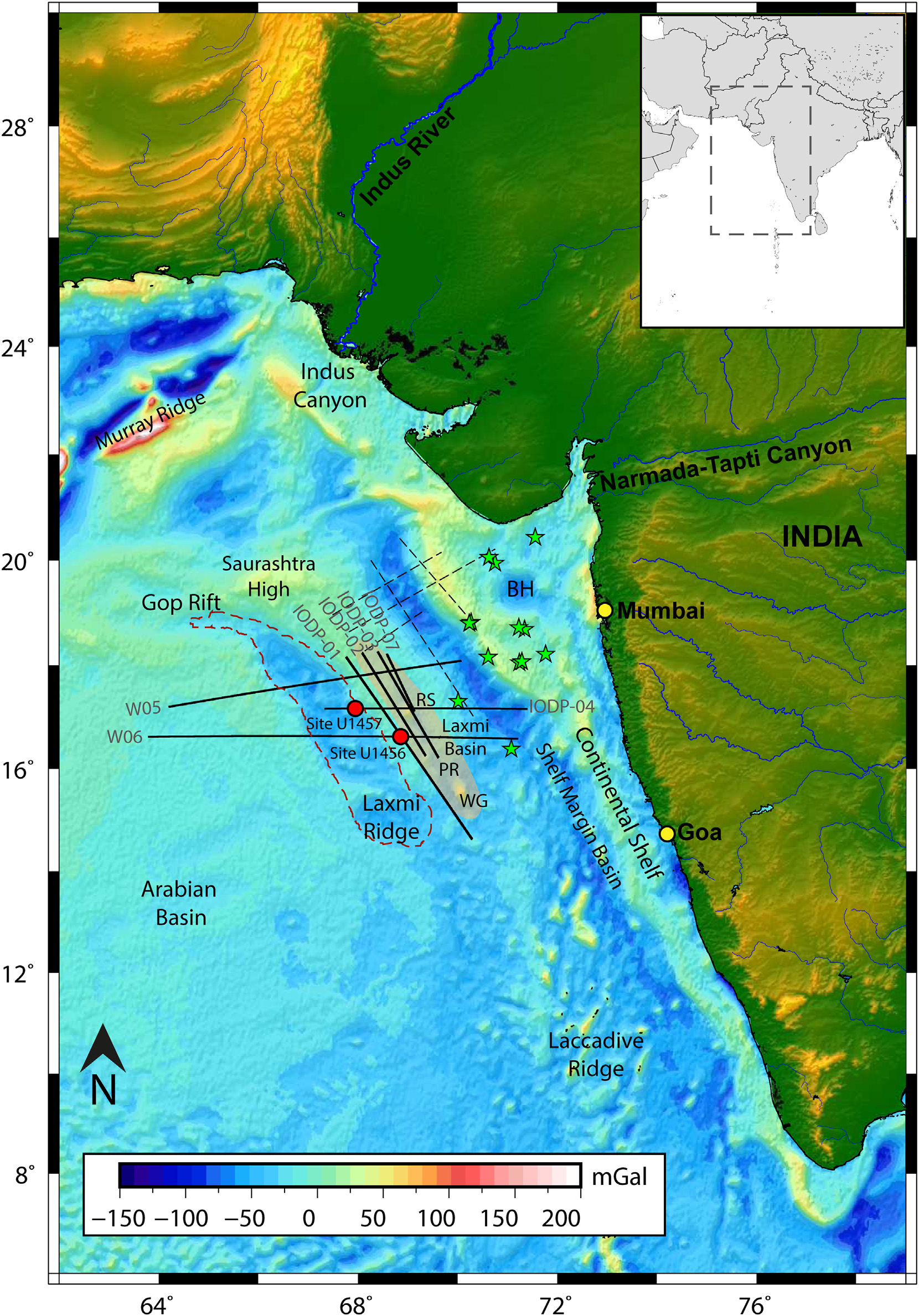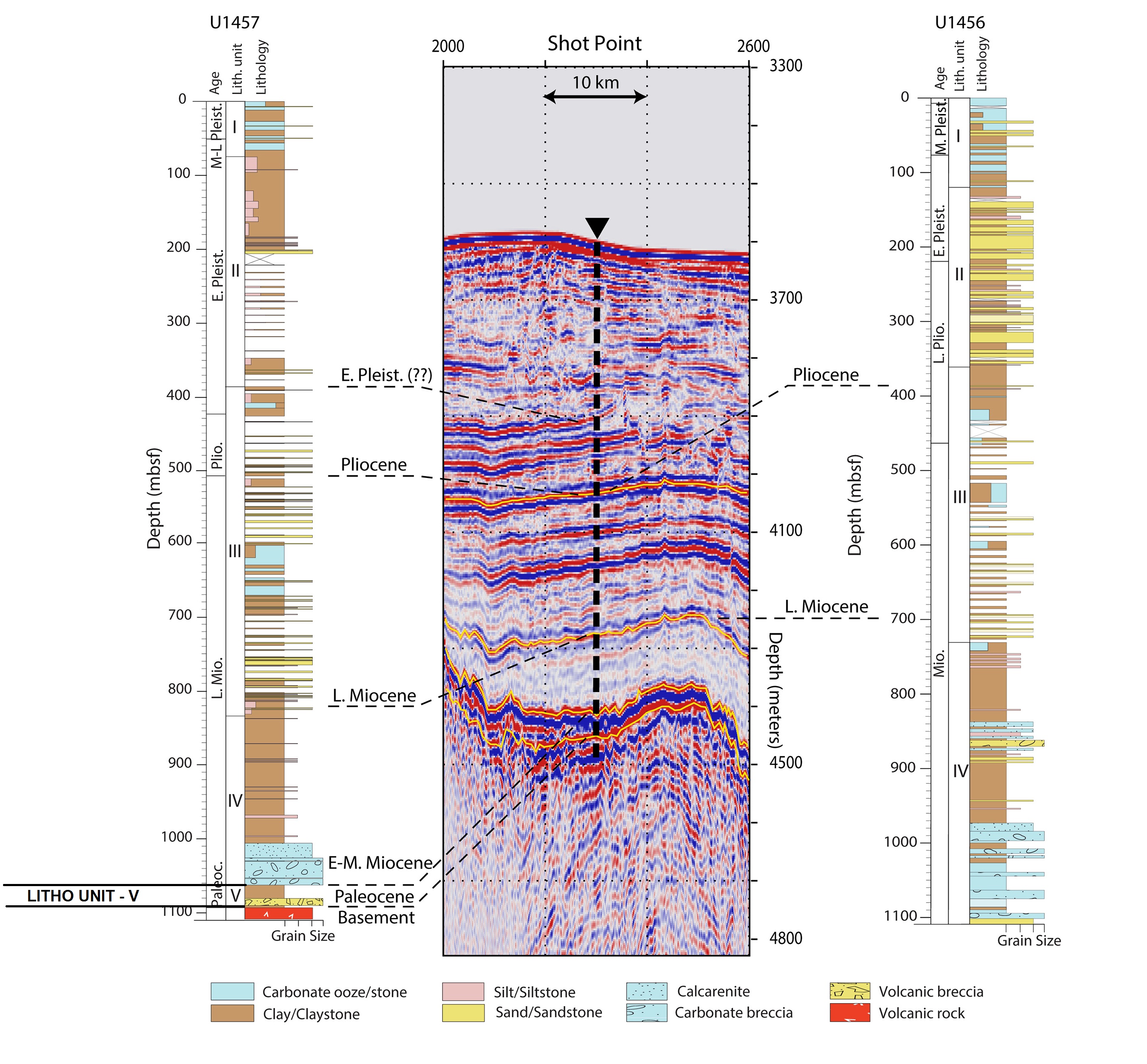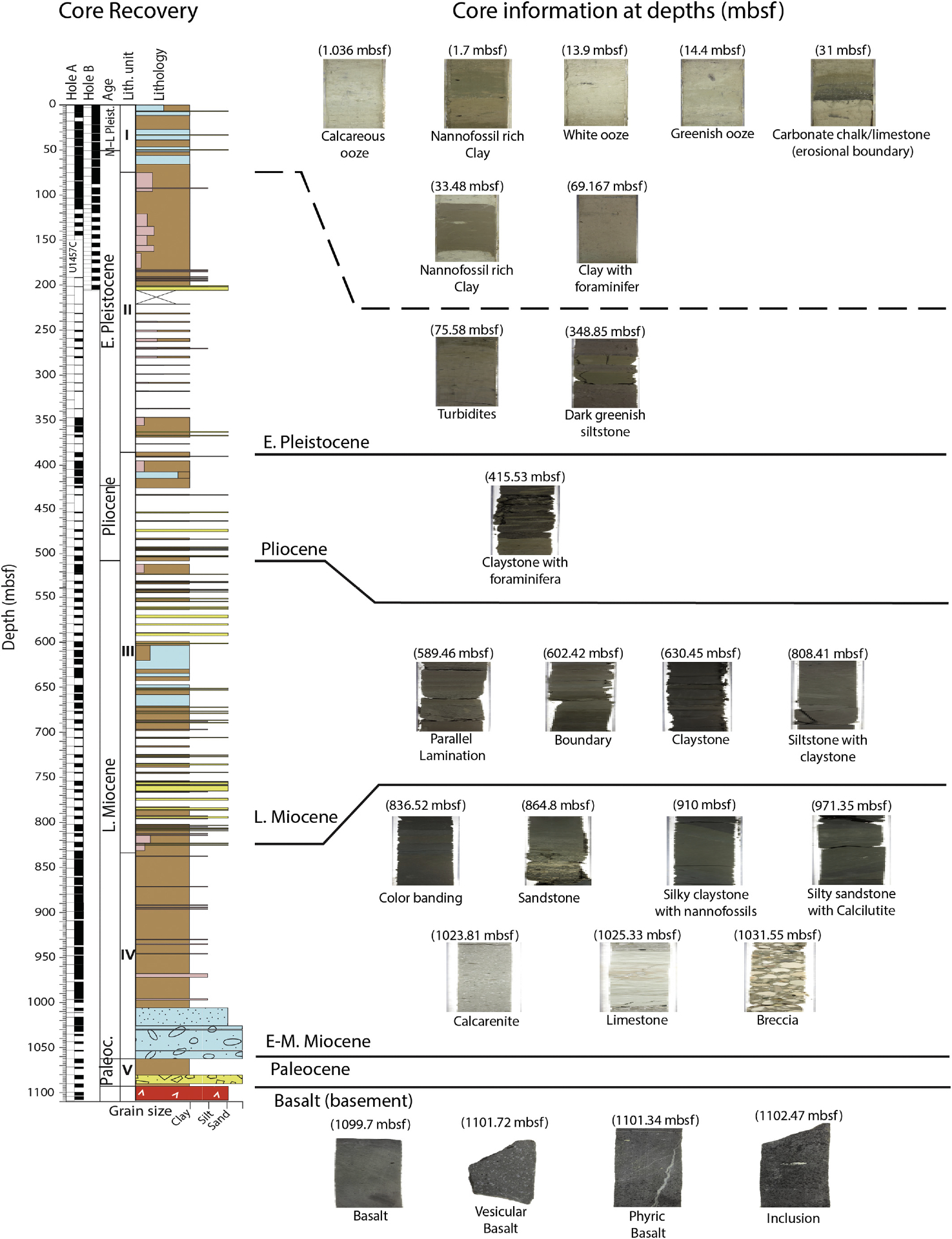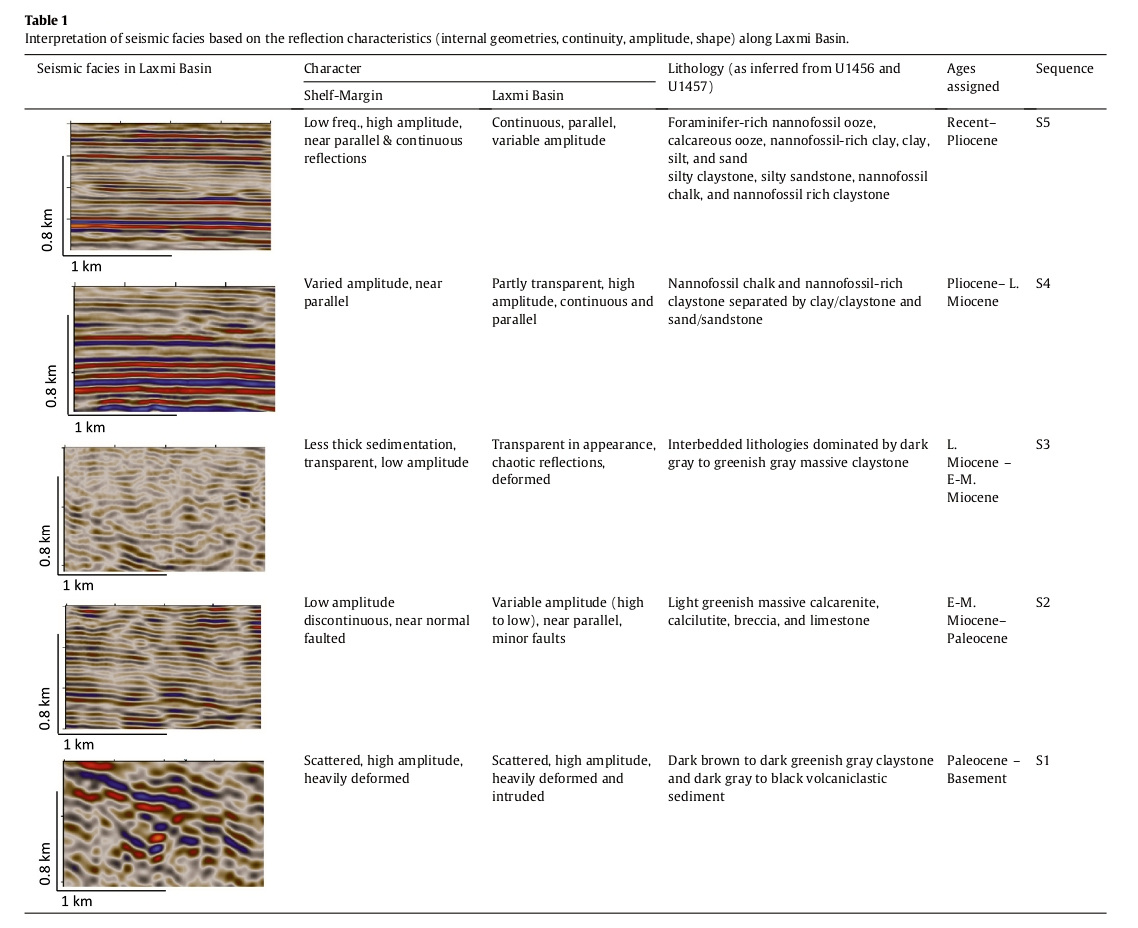Laxmi Basin Informal Lithounit V Fm
Type Locality and Naming
Type section (reference well) is in Site U1457, 1060-1090 mbsf. [Original Publication: D.K. Pandey, P.D. Clift, D.K. Kulhanek and the Expedition 355 Scientists. (2016). Proceedings of the International Ocean Discovery Program, Vol. 355. Publications.iodp.org]
[Figure 1: Regional free air gravity anomaly map of the western Indian Ocean with mainland topography. The area of study is shown in the inset regional map. Superposed are the major tectonic elements (in black) and locations of seismic profiles (solid black lines) used for the present study. Drill locations of IODP Expedition 355 used to compare the litholog data with seismic sequences are marked in red circles. Green stars denote the location of the exploratory wells (NELP 2007) from the near shelf region. Demarcation of Laxmi Ridge from free air gravity anomaly response is denoted in red dashed lines. The interpretation from seismic profiles IODP-02, IODP-03, IODP-07, W05 and W06 are utilized as constraints for the present study and incorporated to generate the isopach map. The black dashed lines are the locations of published seismic profiles (Pandey et al., 2017; Nair and Pandey, 2018). The distribution of rivers in the Indian mainland is shown in blue. BH- Bombay High; RS- Raman Seamount; WG-Wadia Guyot, PR- Panikkar Ridge. The extent of PR modified from Pandey and Pandey (2015), (after Nisha Nair et al., 2021)]
[Figure 2: Calibration of seismic horizons with sediments recovered from Sites U 1456 and U1457 (Pandey et al., 2016) in the Laxmi Basin. Seismic reflection profile IODP-04 crossing across drill site U 1457 shows the reflection configuration and correlated age from cores. Ages are assigned from the nannofossil biostratigraphic markers (IODP Expedition 355) using the geological time-scale (Gradstein et al., 2012), (after Nisha Nair et al., 2021)]
[Figure 3: Main sedimentary features corresponding to dominant lithology of each interpreted sequence from SiteU1457. The descriptions and depth of the cores are taken from the core log report of IODP Expedition 355, after Nisha Nair et al., 2021)]
Lithology and Thickness
Claystone and Volcanoclastics. Dark brown to dark greenish gray claystone and dark gray to black volcaniclastic sediments.
Relationships and Distribution
Lower contact
Basalt basement
Upper contact
Unconformity to Laxmi Basin Informal Lithounit IV Fm
Regional extent
GeoJSON
Fossils
All the foraminiferal and calcareous datums given in table below:
[Figure 4: Biostratigraphic datums of Site U1457]
Age
Depositional setting
Additional Information
[Figure 5: Interpretation of seismic facies based on the reflection characteristics (internal geometries, continuity, amplitude, shape) along Laxmi Basin, (after Nisha Nair et al., 2021)]




